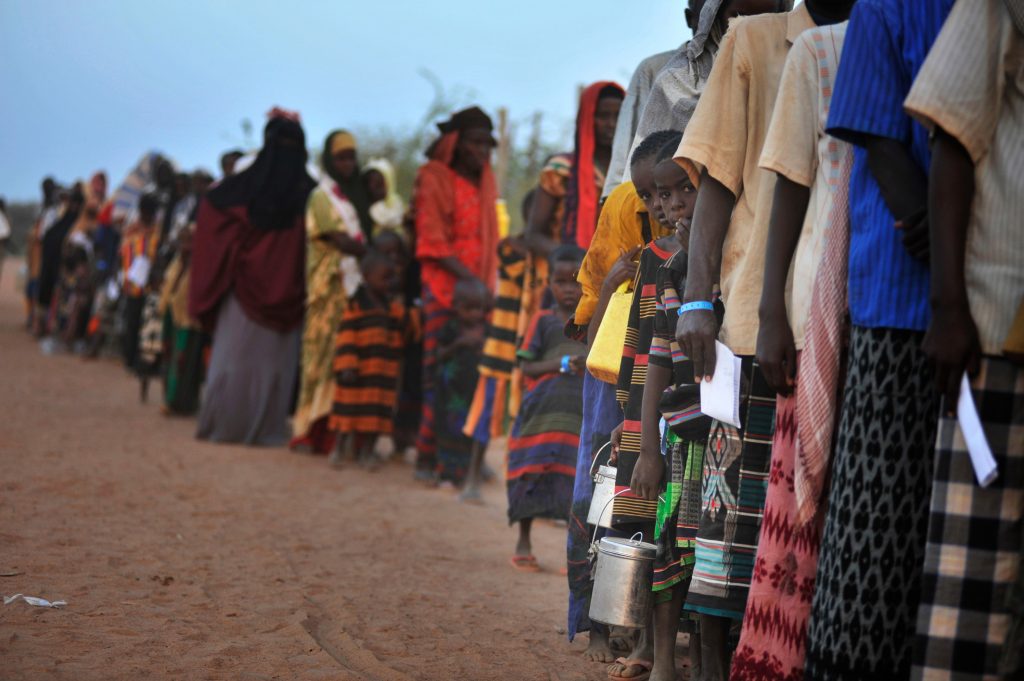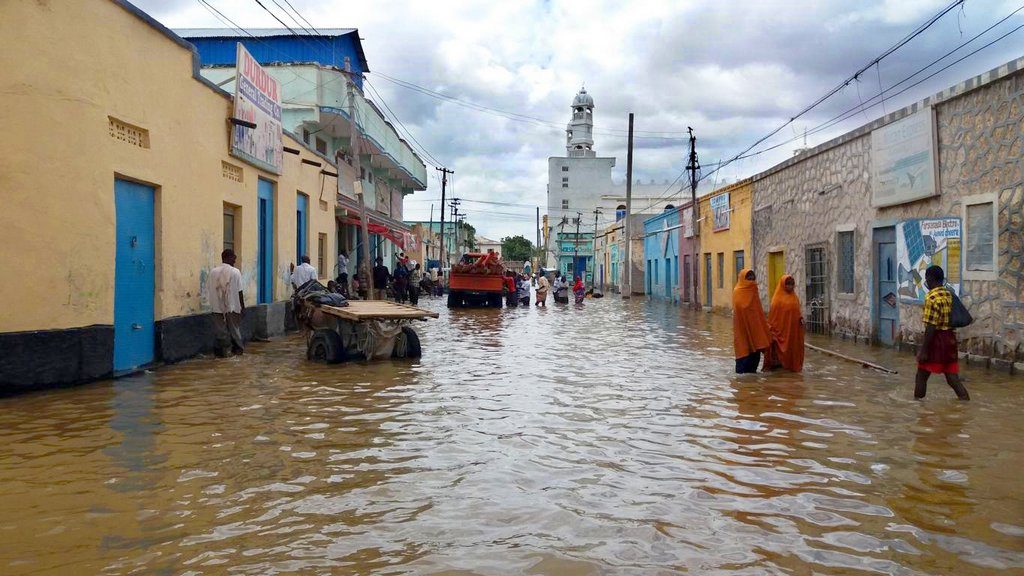Emergency Response

Unlike in 2017 when the rains were poor, the above average Gu rains in April this year are already worsening conditions in overcrowded Internally Displaced Persons (IDP) settlements and displacing more people along riverine areas due to flooding...In Baidoa, half of the estimated more than 246,000 IDPs, are at the risk of flash flooding...In Galgadud region, heavy rains resulted in flash floods that destroyed IDPs shelters in settlements in low lying land in Abudwaq town...An estimated 9,300 displaced people in Danwadaag, Kulmiye and Wadajir settlements have been affected and an unknown number has moved to Cadaado town until flooding recedes...In Jubaland, an estimated 28,200 people have been displaced by flash flooding. This includes 8,000 in Saakow; 6,000 in Bu’ale; 6,000 in Luuq; 6,000 in Afmadow; 1,200 in Ceel Waaq villages and some 7,000 people in Jilib and Jamaame riverine areas who have been temporarily displaced to nearby highland areas. In Middle Shabelle, the Shabelle River burst its banks displacing people in Horseed area. Farms and IDP shelter were washed away. Some 7,000 affected people have moved to Hantiwadaag village in Jowhar. According to partners, an estimated 13,000 have been affected by flooding...In Hiraan region, thousands of people have been affected after the Shabelle River burst its banks and its inlets overflowed into parts of Belet Weyne town and several riverine villages inundating houses and crops. (OCHA, 22 Apr 2018)

Overall, more than 427,000 people have been affected as of 26 April and of these nearly 175,000 have been displaced as a result of the flash and river flooding in Hirshabelle, South West and Jubaland states as well as Banadir region, according to data collected by humanitarian partners. Assessments are ongoing to determine the impact of flooding in affected areas. (OCHA, 26 Apr 2018)
